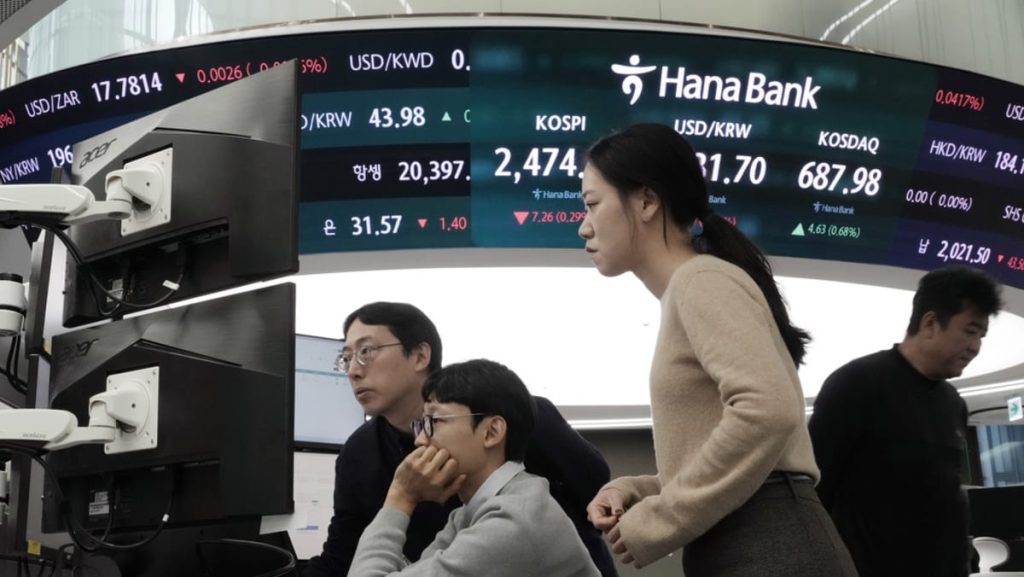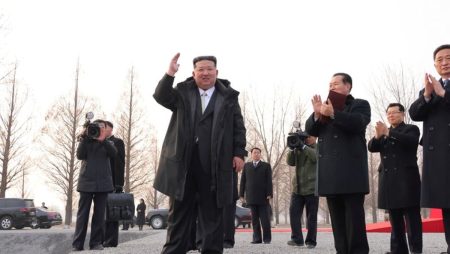Trade War Escalation Rattles Global Markets
The global economy faced a fresh wave of uncertainty as U.S. President Donald Trump announced significant tariffs on steel and aluminum imports. This move not only reignited fears of a trade war but also rattled financial markets worldwide. In Asia, equities predominantly declined on Monday, February 10, as investors grappled with the implications of these tariffs and their potential impact on global trade dynamics. The announcement came as a stark reminder of the unpredictable nature of international trade relations under the Trump administration, leaving markets on edge.
A Week of Uncertainty Begins
The week commenced with heightened volatility, much like the previous week, which saw Wall Street endure losses triggered by concerns over inflation and underwhelming job creation numbers. The U.S. labor market data indicated that far fewer jobs were added than anticipated, compounding investor anxiety. This backdrop of economic uncertainty was further exacerbated by Trump’s tariffs, signaling a return to his assertive trade policies. The timing of this announcement was particularly concerning, as it followed a period where markets had shown signs of recovery, only to be jolted once again by protectionist measures.
Global Leaders Respond to Tariffs
The international community swiftly responded to Trump’s tariffs, with leaders from affected countries expressing their disapproval. Guo Jiakun, a spokesperson for China’s Ministry of Foreign Affairs, reiterated Beijing’s stance that trade wars benefit no one, emphasizing the importance of cooperation. Similarly, French Foreign Minister Jean-Noel Barrot signaled the European Union’s intent to reciprocate with matching tariffs, underscoring the potential for further escalation. These reactions illustrate the widespread concern among global leaders about the consequences of protectionist policies and their impact on international relations.
Markets Feel the Heat Across Asia
The impact of Trump’s tariffs was acutely felt in Asian markets, with indices in Sydney, Seoul, Manila, Bangkok, Mumbai, Jakarta, Wellington, and Taipei all experiencing declines. The region, heavily reliant on international trade, was particularly vulnerable to the implications of these protectionist measures. The decline in commodity-linked currencies such as the Canadian dollar, Mexican peso, and South Korean won further highlighted the economic fallout. These currencies are closely tied to the export of steel and aluminum, key industries in these nations, which now face uncertainties due to the tariffs.
Economic Impact and Trade Deficit Concerns
The tariffs pose significant economic challenges, particularly for countries reliant on exports to the U.S. Canada, the largest supplier of steel and aluminum to the U.S., is among the most affected. Other major exporters, including Brazil, Mexico, and South Korea, also face potential losses. Trump’s warning to Japan, threatening tariffs if the trade deficit is not addressed, adds another layer of complexity. This approach not only risks alienating key trade partners but also raises questions about the long-term stability of global trade relations.
Conclusion: A Rocky Road Ahead
Looking ahead, the global economy faces a challenging landscape as trade tensions continue to escalate. Trump’s tariffs have ignited fears of a full-blown trade war, with potentially severe repercussions for industries and consumers alike. The immediate impact on financial markets serves as a precursor to the broader economic implications, including increased costs, reduced competitiveness, and potential job losses. As global leaders navigate this unpredictable terrain, the focus must remain on fostering dialogue and cooperation to mitigate the adverse effects of protectionist policies. The road ahead is undeniably rocky, but concerted international efforts may yet stabilize the global economy and prevent further escalation.












